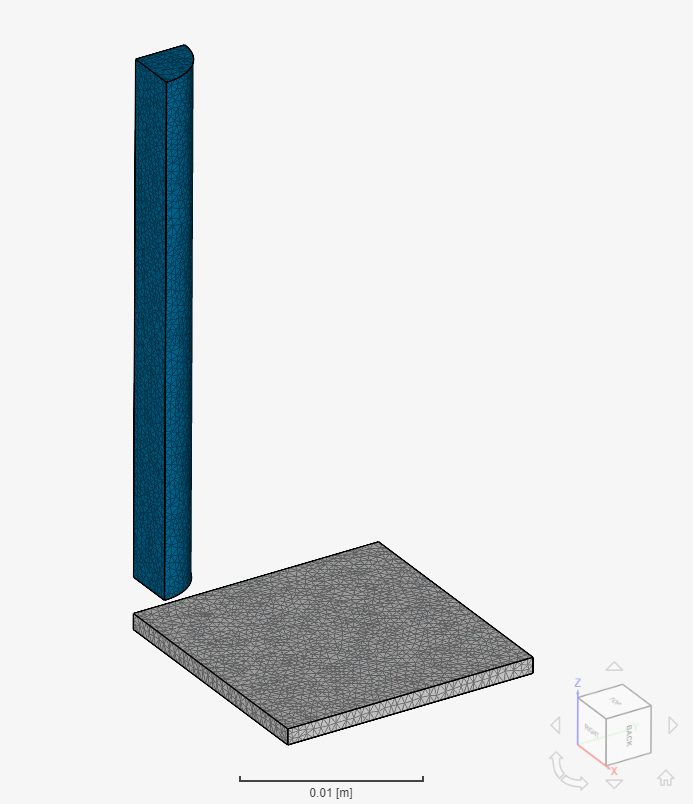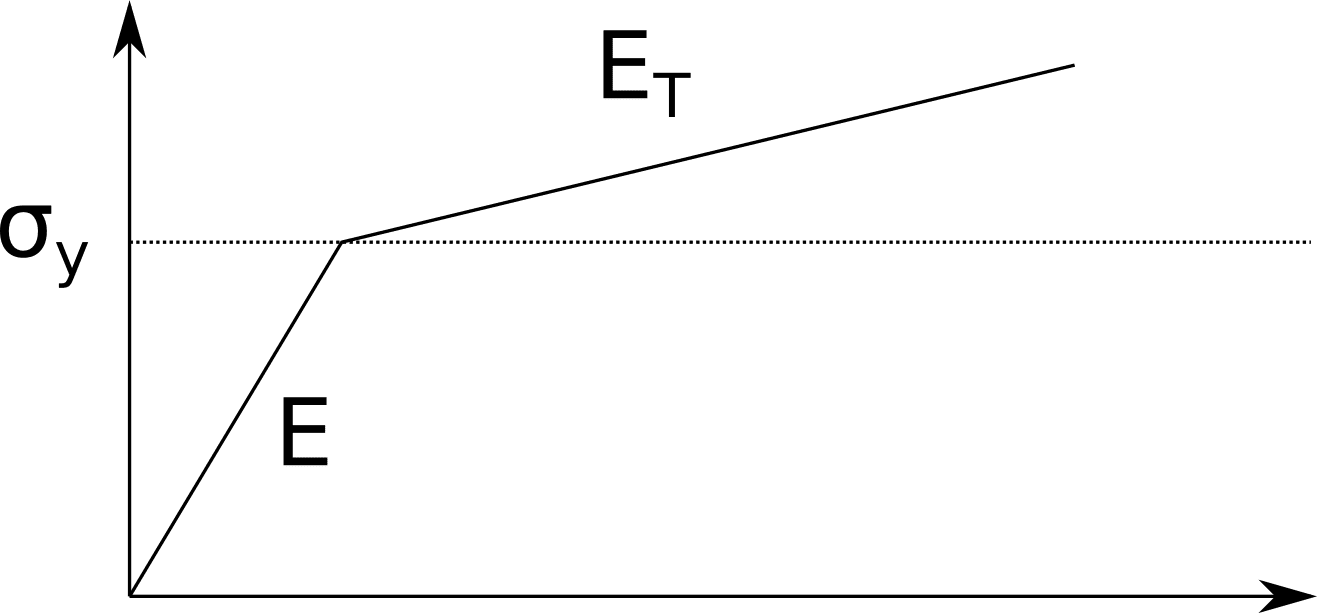Documentation
This validation case belongs to an elastoplastic impact in solid mechanics. The aim of this test case is to validate the following parameters:
The simulation results of SimScale were compared to the numerical results presented in [SDNV103]\(^1\).
The geometry used for the case is as follows:
It represents an elastoplastic bar in the z-direction and a rectangular plate in the x-y plane with the following coordinates for each point:
| Point | X [m] | Y [m] | Z [m] |
|---|---|---|---|
| A | 0 | 0 | 0 |
| B | 0.016 | 0 | 0 |
| C | 0.016 | 0.016 | 0 |
| D | 0 | 0.016 | 0 |
| E | 0 | 0 | 0.001 |
| F | 0.016 | 0 | 0.001 |
| G | 0.016 | 0.016 | 0.001 |
| H | 0 | 0.016 | 0.001 |
| I | 0 | 0 | 0.00327 |
| J | 0.0032 | 0 | 0.00327 |
| K | 0 | 0.0032 | 0.00327 |
| L | 0 | 0 | 0.03567 |
| M | 0.0032 | 0 | 0.03567 |
| N | 0 | 0.0032 | 0.03567 |
Tool Type: Code Aster
Analysis Type: Dynamic
Mesh and Element Types: The meshes used in this project were created in SimScale with the standard algorithm. Manual refinements are used to control the cell sizes.
| Case | Element Type | Number of Nodes | Element Technology |
|---|---|---|---|
| A | 1st Order Tetrahedral | 10435 | Standard |
| B | 2nd Order Tetrahedral | 70001 | Reduced Integration |
Find below the mesh used for case B. It’s a standard mesh with second-order tetrahedral cells.

Material:

Boundary Conditions:
The reference solution is from a numerical computation as presented section 2 of [SDNV103]\(^1\), which are taken as the mean results of [Stainer]\(^2\):
\( DX_J = 3.87 mm \)
\( DZ_L = 13.46 mm \)
Comparison of displacements at points J (DX) and L (DZ) at time \( t = 9×10^{-5}\ s \):
| CASE | POINT | COMP | COMPUTED | REF | ERROR |
|---|---|---|---|---|---|
| A | J | DX | 0.00289 | 0.00387 | -25.4% |
| A | L | DZ | -0.01250 | -0.01346 | -7.1% |
| B | J | DX | 0.00365 | 0.00387 | -5.8% |
| B | L | DZ | -0.01265 | -0.01346 | -6.0% |
An illustration of the final shape (case B) can be found in Figure 4. The elastoplastic deformation due to the impact can be appreciated:
References
Note
If you still encounter problems validating you simulation, then please post the issue on our forum or contact us.
Last updated: September 30th, 2021
We appreciate and value your feedback.
Sign up for SimScale
and start simulating now